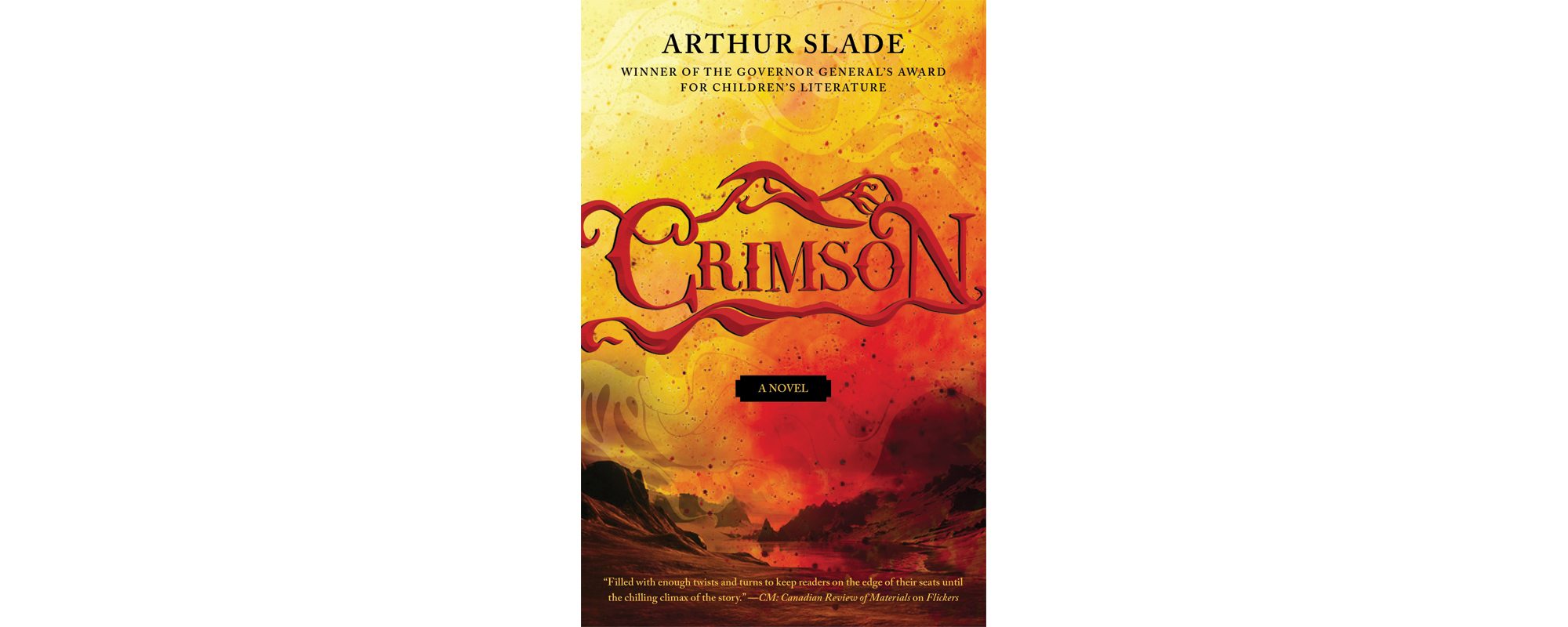 Crimson opens with 11-year-old Fen in the village square awaiting punishment from Queen Servilia, the magical ruler of Illium. For filching a tiny glass butterfly (a gift for her little sister), Fen has been sentenced to lose her hand. In most novels, a commotion or new character would pop up, disrupting this moment of horrific violence. But Arthur Slade is willing to go there. The Queen’s Guard – his red hair a symbol of Servilia’s magic, the only magic allowed in Illium – swiftly dispatches Her Majesty’s justice.
Crimson opens with 11-year-old Fen in the village square awaiting punishment from Queen Servilia, the magical ruler of Illium. For filching a tiny glass butterfly (a gift for her little sister), Fen has been sentenced to lose her hand. In most novels, a commotion or new character would pop up, disrupting this moment of horrific violence. But Arthur Slade is willing to go there. The Queen’s Guard – his red hair a symbol of Servilia’s magic, the only magic allowed in Illium – swiftly dispatches Her Majesty’s justice.
Fast-forward three years, and Fen is scraping by as a one-handed berry picker and taking care of her sister, May, while her mother works in the red dust mines harvesting the material that grants the Queen her power. Their loving family is a bright spot in a grim reality. One day, Fen wakes up to find her hair turning red, a sign that she’s becoming a “wildmagic” – a person with unpredictable abilities. This magic is different from the Queen’s and her guards’; and since Servilia has no control over it, she’s decreed the very existence of wildmagics as illegal.
Fen’s level-headed mother immediately hands over the family’s meagre supplies and Fen makes her escape. Things go to hell almost immediately, in large part due to the Queen’s omniscience. (Servilia is so powerful she appears in her citizens’ heads every morning to offer a creepy, Big Brother–esque greeting.) Soon Fen is fighting for her life, while her sister is kidnapped and taken to the capital city. Rescuing her becomes Fen’s driving motivation.
Fen discovers her abilities slowly, almost incidentally – her story is as political as it is magical – as she uncovers the inaccurate history she and her fellow citizens have been raised on.
There’s a quasi-medieval feel to the village life and social makeup of Illium. But rather than default to European history, Slade instead chooses Chinese history as a model for Fen’s world. The regional food, names, traditions, and clothing of the village riff on Chinese cultural and phonetic customs. It’s a refreshing choice that calls into question the Eurocentricity of many fantasy worlds.
It’s also an insightful touch that one of the things the dictatorial Queen has done during her 1,000-year rule is stamp out the indigenous languages of the people she oppresses. Fen’s relationship to her ancestors’ forgotten language is a crucial part of her journey of identity, including the desire to discover her true name, written for her by her mother in a character-based language Fen cannot read. This subtle nod to the importance of language and culture in relation to freedom adds significant emotional resonance.
Those quieter, more introspective details are essential to Crimson because the story moves at an almost breakneck speed. Like so many great fantasy novels, Crimson is a quest book, meaning Fen spends the majority of the time climbing, running, swimming, or riding. The breathless pace of the narrative will be a big plus for some readers, but others might find themselves hoping for a few more moments in which to grow attached to the characters. (For instance, May, like most motivation-providing characters in danger, is a bit thin.) It’s hard to fault a writer for storytelling that is too tight, though, and Slade’s piano-wire precision is a show of remarkable skill. It’s due to his unerringly smooth prose and spot-on dialogue that the story is able to whisk along so quickly.
Fen herself is a wonderful and vibrant hero. She’s relatable in her imperfections and has small but great moments of wry humour that land perfectly. Her love for her family feels achingly real, and her moments of horror are ours as well. Her arc traces the danger of being made into an instrument for anyone but yourself. It’s timely and timeless.
 Contact us via email
Contact us via email

